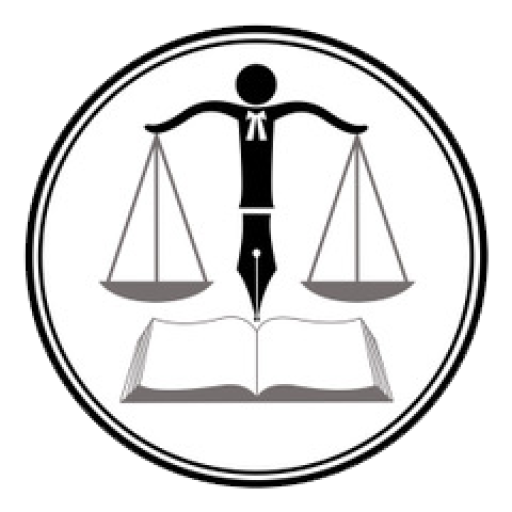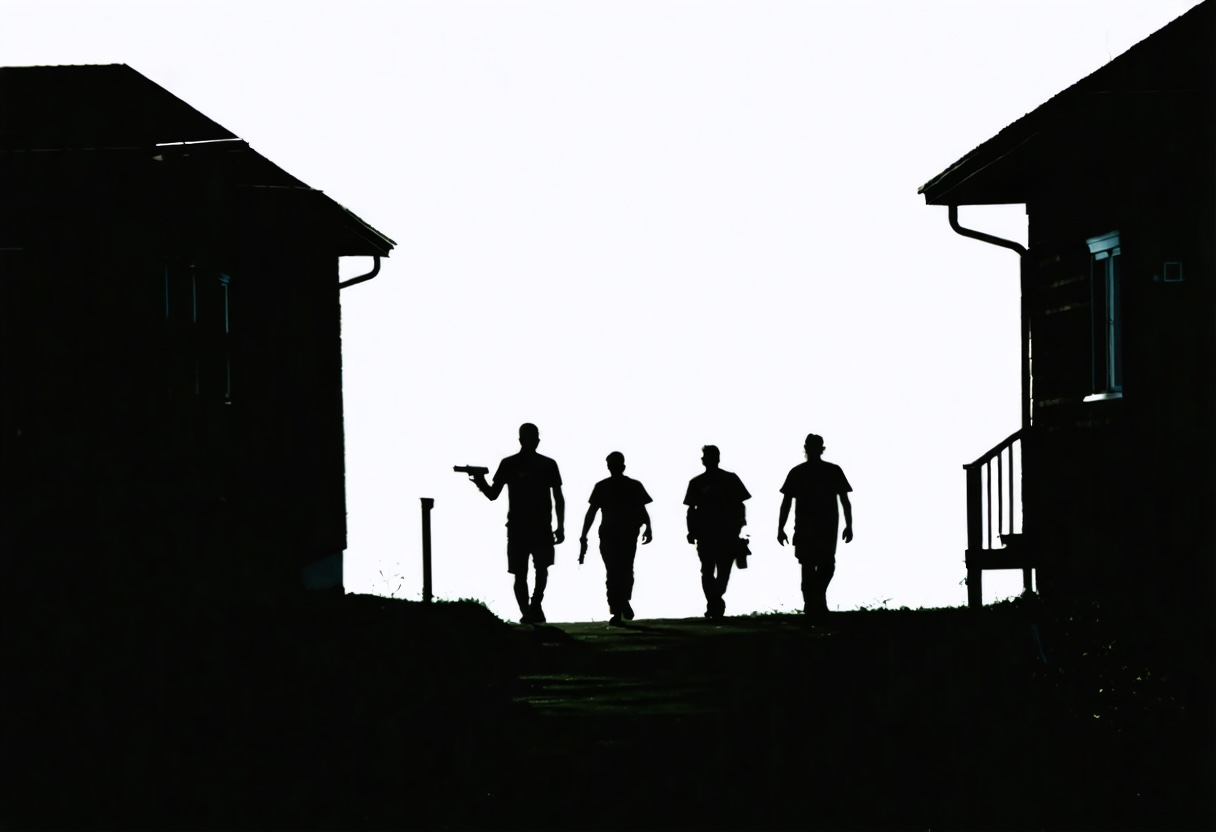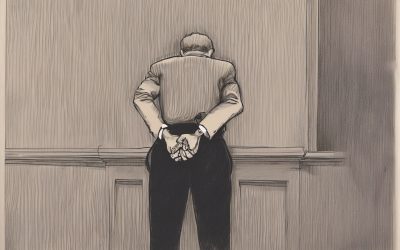This week’s top three summaries: R v Mohamed, 2025 ONCA 611: #parties 21(2), R v Hambleton, 2025 ONSC 5061: #bias appeals, R v JC, 2025 ABCJ 120: #possession hot potato
R. v. Mohamed, 2025 ONCA 611
[September 5, 2025] s.21(2) Common Unlawful Purpose and Murder [Reasons by Fairburn A.C.J.O. with S. Gomery and D.A. Wilson JJ.A. concurring]
AUTHOR’S NOTE: Justice Fairburn on Party Liability to Murder under s. 21(2) Criminal Code
Justice Fairburn offers a clear and accessible explanation of party liability for homicide, with particular focus on the common unlawful purpose route under s. 21(2) of the Criminal Code.
Key Principles:
-
First-Degree Murder and Planning/Deliberation
Liability for first-degree murder through planning and deliberation cannot usually arise under s. 21(2). If an accused knows that another person is planning and deliberating murder, their liability flows through aiding under s. 21(1)(b), not through a common unlawful purpose. Section 21(2) is engaged only when the original agreement is to pursue a different crime and murder results as a consequence. -
Second-Degree Murder and Common Unlawful Purpose
For second-degree murder liability under s. 21(2), the Crown must prove that the accused knew that one of the parties to the unlawful purpose (not murder itself) was likely to commit murder in carrying it out.-
Importantly, there is no “ought to have known” standard.
-
It is not enough to simply participate in or aid the common unlawful purpose; subjective foresight of murder is required.
-
-
Manslaughter and Common Unlawful Purpose
Where the evidence falls short of subjective foresight of murder, liability may still attach for manslaughter. In that case, the accused must have foreseen that a probable consequence of carrying out the unlawful purpose was a risk of bodily harm that was more than trivial or transitory.
Takeaway:
Justice Fairburn’s analysis underscores that party liability under s. 21(2) is carefully graduated by mental state:
-
Knowledge of planning/deliberation → aiding liability under s. 21(1)(b)
-
Subjective foresight of murder → second-degree murder under s. 21(2)
-
Foreseeability of non-trivial bodily harm → manslaughter under s. 21(2)
This framework highlights the sharp distinction between knowledge, foresight, and recklessness, and clarifies why liability for the most serious homicide offences demands actual, not imputed, foresight.
A. OVERVIEW
[1] Abdullahi Mohamed, Trevaughan Miller and Abdirahman Islow (the “appellants”) were convicted of first-degree murder in the 2018 shooting death of Nnamdi Ogba.
[2] The appellants raise seven grounds of appeal:
1. the jury was erroneously instructed on various modes of participation, specifically, aiding (s. 21(1)(b) of the Criminal Code, R.S.C. 1985, c. C46) and liability through pursuit of a common unlawful purpose (s. 21(2) of the Criminal Code);
[3] In my view, the first ground of appeal has substantial merit: the errors in the instructions regarding modes of participation are insurmountable and the verdicts must be set aside and a new trial ordered. In the hope of providing some assistance for purposes of the new trial, I will also address the other grounds of appeal, none of which would have resulted in a new trial.
[6] The footage shows the three appellants taking a cab to an apartment building parking lot where they got into a stolen Nissan Rogue with stolen licence plates. They are later shown arriving at Scarlettwood Court in that stolen car. Mr. Islow, the driver, remains in the car, while Mr. Mohamed and Mr. Miller get out and walk toward the apartment complex. Mr. Islow positions the car in a way that allows for an easy exit.
[7] Mr. Miller and Mr. Mohamed are then shown walking through the parking lot at around the same time that Mr. Ogba is shown leaving one of the apartment buildings. Mr. Ogba, who lived in Brampton and worked as an engineer, had been visiting a friend from his soccer team who lived in the Scarlettwood Court area.
[8] The video footage shows Mr. Miller and Mr. Mohamed approaching Mr. Ogba from behind. There are several flashes of light in quick succession, and Mr. Miller and Mr. Mohamed then turn and run back to the vehicle where Mr. Islow is waiting. Mr. Miller and Mr. Mohamed enter the vehicle and Mr. Islow drives away.
[9] It is not contested that this footage depicts the shooting of Mr. Ogba. He was left to die in the parking lot, struck by five of the nine bullets that were shot. His death resulted from a bullet to the heart.
[10] CCTV footage from after the shooting shows the appellants together in an elevator. Mr. Islow can be seen showing Mr. Mohamed and Mr. Miller something on his phone, rubbing them on the head, and offering them something that looks like a pill.
(2) Crown theory/evidence
[12] The Crown’s position at trial was that the shooting resulted from an ongoing rivalry between two gangs: C3 and the Scarlettwood Crips. The Crown theorized that the appellants were members of C3 and that they went to the Scarlettwood Crips’ territory intending to shoot someone in the area to send a message to the rival gang.
[14]….Detective Constable (“DC”) Katafigiotis was qualified as an expert witness….
….DC Katafigiotis also explained that gang members sometimes go into a rival gang’s territory to shoot a random person as a display of power.
(3) Defence theory/evidence
[18] Mr. Mohamed was the only accused to testify. He admitted that he was guilty of manslaughter.
[20]….Mr. Miller told Mr. Mohamed that he had a friend named “BG” who had some crack to sell. Mr. Miller said he had access to a car that they could use to go to the Scarlettwood Court area to get the drugs. Mr. Islow wanted to tag along and agreed to drive.
[21] Mr. Mohamed testified that he, Mr. Miller, and Mr. Islow travelled to Scarlettwood Court to pick up the drugs. There were no discussions about shooting anyone on the way to the drug deal. As he and Mr. Miller were walking to meet BG, Mr. Mohamed saw someone he recognized as “Biggs” who owed him money. He explained that on a previous occasion, he had given some crack on “consignment” to Biggs, but Biggs had never paid him. Therefore, when he saw Biggs, he thought “perfect, this is my chance to get my money.” He wanted Biggs to take him seriously, so he started walking behind the man he believed to be Biggs and then “let off one shot” from his gun, which he described as an intentionally “high and wide” shot.
[22] According to Mr. Mohamed, the person he thought was Biggs then turned around and said, “Hey, hold on.” It was at that moment that Mr. Mohamed realized that the man he was trying to scare was not Biggs. He had mistaken Mr. Ogba, a complete stranger, for Biggs. Before he could see or do anything, Mr. Mohamed “heard more shots” and so he panicked, turned around and ran back to the car. Once he and Mr. Miller were back at the car, Mr. Mohamed told Mr. Islow to drive. When he asked Mr. Miller “what the fuck, what happened”, Mr. Miller replied that after Mr. Mohamed took a shot, he just “panicked and he started shooting”.
[23] Why did Mr. Mohamed have a gun? Because, he said, he kept one on him for “protection” when engaging in drug transactions. He had been “robbed” at knifepoint previously by customers who used crack cocaine….
C. DISCUSSION
(1) Instructions re: modes of participation were deficient
(b) Section 21 and modes of participation
[36] As a refresher, s. 21(1) of the Criminal Code specifies three different types of party liability:
Parties to offence
21 (1) Every one is a party to an offence who
(a) actually commits it;
(b) does or omits to do anything for the purpose of aiding any person to commit it; or
(c) abets any person in committing it.
[37] I will refer to s. 21(1)(a) liability as “principal” or “co-principal” liability. These are individuals who actually commit the offence, in the sense that they commit all of the elements of the offence, accompanied by the required mens rea for a principal offender. Where two or more persons actually commit the offence, they are considered co-principals: R. v. Pickton, 2010 SCC 32, [2010] 2 S.C.R. 19, at para. 53.
[38] I will refer to s. 21(1)(b) liability as “aiding.” Aiders are those individuals who do something for the purpose of aiding the principal or co-principals in the commission of the offence. To fall within this category, one must possess the required mens rea for an aider when providing that assistance: Pickton, at para. 53. I will return to aiding in more detail below.
[40] Turning to s. 21(2), which is a key issue in this case, it reads as follows:
Common intention
(2) Where two or more persons form an intention in common to carry out an unlawful purpose and to assist each other therein and any one of them, in carrying out the common purpose, commits an offence, each of them who knew or ought to have known that the commission of the offence would be a probable consequence of carrying out the common purpose is a party to that offence.
[41] Section 21(2) operates differently than s. 21(1). Whereas s. 21(1) captures those who participate in, aid in or abet a specific crime, s. 21(2) is much broader in scope. It extends liability to those individuals who are not principals, aiders or abettors to offences. It applies to situations where the accused has agreed with at least one other to commit an offence and, while carrying out that agreed-upon unlawful purpose, at least one or more of the participants to the original agreement (but not the accused) commits a different offence. Section 21(2) will apply if the accused knew (or, in the case of offences not requiring specific intent, ought to have known) that one of the participants to the agreed-upon unlawful purpose would likely commit the incidental offence while pursuing the common unlawful purpose. Therefore, s. 21(2) extends responsibility for incidental offences – offences other than the offence the accused originally agreed to participate in – provided that the incidental offence is committed “in carrying out” the originally-agreed-upon unlawful purpose and the accused had the requisite degree of mens rea: R. v. Cadeddu, 2013 ONCA 729, 304 C.C.C. (3d) 96, at paras. 50-52; R. v. Simon, 2010 ONCA 754, 104 O.R. (3d) 340, at paras. 25, 40-42, leave to appeal refused, [2010] S.C.C.A. No. 459.[Emphasis by PJM]
[42] Accordingly, s. 21(2) liability breaks down nicely into three elements, categorized as: (1) agreement (the original unlawful purpose); (2) offence (the offence committed that is incidental to the originally-agreed-upon unlawful purpose); and (3) knowledge (subjective or objective foresight of the incidental offence).[Emphasis by PJM]
[43] To establish agreement, the Crown must prove that there was a common intention between at least two people to jointly carry out a common unlawful purpose: R. v. Gong, 2023 ONCA 230, 425 C.C.C. (3d) 122, at para. 32. Of course, the common unlawful purpose must constitute a criminal offence: Cadeddu, at para. 56. Therefore, it is the act of agreeing upon the commission of a criminal offence.
[44] To establish the offence, the Crown must prove that at least one of the individuals (not the accused) who was part of the original agreement committed a different offence while carrying out the original agreement: Gong, at para. 32; Cadeddu, at paras. 59-60. This is often referred to as the “incidental offence”, and it must be different from the agreed-upon offence: Simon, at para. 42. Although not the offence intended by the parties, the incidental offence must be related to the original unlawful purpose in that it was committed in the course of carrying out the initial agreement: Cadeddu, at paras. 59-60; R. v. Patel, 2017 ONCA 702, 356 C.C.C. (3d) 187, at para. 41.
[45] As for knowledge – the mens rea component of s. 21(2) – the accused must have the requisite state of mind with respect to the incidental offence. In the context of s. 21(2), that state of mind demands proof of foresight of the probability – meaning likelihood – of the incidental offence being a consequence of carrying out the original common unlawful purpose. Although s. 21(2) provides both a subjective and objective basis – “knew or ought to have known” – for establishing the requisite foresight, where subjective knowledge is the only legally- and constitutionally-sufficient basis upon which to establish mens rea (e.g., in the case of murder), only subjective knowledge of the likelihood of the commission of the incidental offence will do: R. v. Jackson, [1993] 4 S.C.R 573, at p. 583; R. v. Srun, 2019 ONCA 453, 146 O.R. (3d) 307, at para. 63.[Emphasis by PJM]
[46] ….While the incidental offence of murder need not occur in an expected way, the likelihood of a murder being committed by one of the participants in the course of carrying out the original agreement must be subjectively foreseen by the accused. In other words, the accused must know it is likely that one of his co-participants in the original agreement will, with the requisite intention for murder, kill someone while carrying out the originally-agreed-upon unlawful purpose: R. v. Logan, [1990] 2 S.C.R. 731, at pp. 747-748.
[47] ….Although this court has left open the question as to whether s. 21(2) is an available route to a planned and deliberate first-degree murder, I confess to having some difficulty with the idea: R. v. Phillips, 2017 ONCA 752, 355 C.C.C. (3d) 141, at para. 248.
[49] That said, it would not be appropriate to definitively rule on this point in the absence of full argument, especially since the Crown concedes that s. 21(2) did not furnish a path to first-degree murder here and instead argues that s. 21(2) was not left for the jury to consider as a path to first-degree murder. As a result, I need not conclusively resolve the issue here and leave it for another day.
[50] Finally, to be guilty of manslaughter pursuant to s. 21(2), the Crown must prove that “a reasonable person in all the circumstances would have foreseen that a probable consequence [likelihood] of carrying out the original common purpose was perpetration of an inherently dangerous act creating a risk of bodily harm to the deceased that was neither trivial nor transitory”: Patel, at para. 42. See also: Jackson, at pp. 586-587; Gong, at paras. 33 and 41.
(c) Jury instructions
(i) The original charge
[52] ….I underline the parts of this instruction that are relevant to the issues on appeal:
[115] A person may commit an offence by helping another person to commit that offence. This help may be by doing something, for the purpose of helping the other person to commit the offence.
[116] A person may also commit an offence by being involved with others in a common unlawful purpose. If anyone of the group commits an offence that is different than what they agreed on in the first place, in carrying out their original common unlawful purpose, any other member of the group who knew that the offence would likely be committed by somebody in the group in carrying out their original purpose is guilty of the offence the other person actually commits .
[117] To prove that Mr. Mohamed, Mr. Islow, or Mr. Miller committed first -degree murder or one of the lesser offences that I will tell you about, Crown counsel is entitled to rely on different ways of committing the offence. Proof of any way will do. Proof of every or more than one way is not required .
[56] Notably, despite telling the jury at para. 119 (see Modes of Participation above) that “[l]ater in these instructions” he would “describe for [the jury] in greater detail the different ways of committing first-degree murder (or one of the lesser offences”), those later instructions never came. Therefore, the jury never received more detailed instructions on how to approach liability as an aider or as a participant in a common unlawful purpose, and they were left to deliberate only with what was originally provided to them in para. 115 on aiding and para. 116 on common unlawful purpose.
(ii) Response to the jury’s question
[57] It is clear that the jury needed further instructions, at least relating to liability while engaged in a common unlawful purpose, because they asked for those instructions. On the second day of deliberations, they asked the following question:
We would like some more clarity about 5 – Modes of Participation, in particular #116, including in regards to the definitions of Manslaughter, Second Degree Murder and First Degree Murder. Please use analogies as part of your explanation.
(d) Deficiencies in the charge re: modes of participation
(i) Not clear that s. 21(2) was not a path to liability for first-degree murder
[78] Although the Crown agrees that there was no path to liability for firstdegree murder pursuant to s. 21(2), the Crown contends that a contextual reading of the original jury instructions, combined with the answer to the jury’s question, made clear to the jury that there was no route to first-degree murder by way of s. 21(2).
[80] Respectfully, I am not as optimistic as the Crown that the jury would have understood that first-degree murder was off the table under s. 21(2). In my view, even reading the charge together with the answer given to the jury’s question, it cannot be safely said that the jury would not have been, at a minimum, confused about whether s. 21(2) was an available route to first-degree murder. I say this for several reasons.
[81] First, embedded in the jury’s question was the fact that the jury had no understanding, at least at the time that they posed the question, that liability for first-degree murder was not available pursuant to s. 21(2). The jury’s question, quite perceptively, asked for “more clarity about” the modes of participation and, specifically, about “#116” (which was the common unlawful purpose paragraph), “including in regards to the definitions of … First Degree Murder.” This shows that at the point that the question was posed, the jury did not understand that s. 21(2) was not available as a route to first-degree murder.
[82] Second, I am not satisfied that the answer to the jury’s question cleared matters up much. Bearing in mind the question the jury posed, which reflected their misunderstanding on this very point, this jury needed to be told in no uncertain terms that a verdict of first-degree murder was not available under this mode of participation. Unfortunately, that was not done.
[83] Third, the message to the jury was further muddied by the reminder they were given that there was “more than one way for Crown counsel to prove the guilt of the [appellants] of the crime charged,” that being first-degree murder. Then, in the hypothetical example given to the jury, A and B were only “charged with second degree murder.” This could have left the jury to their own devices when applying the instruction to someone charged with first-degree murder.
[84] Finally, the reminder to the jury at the very end of the answer to the jury’s question that “all” of the original “instructions still appl[ied]” is also concerning. Those original instructions included the fact that all three modes of participation were available, and that the jury need only agree that the appellants “committed first-degree murder…in one way or the other”.
[85] For those reasons, I am not confident that this jury would have understood that they were precluded from arriving at a verdict of first-degree murder pursuant to s. 21(2). And, as I will explain, there is also another difficulty with the instructions on s. 21(2).
[102] The knowledge component of s. 21(2) is also problematic in this case. To be guilty of murder by way of s. 21(2), the appellants had to subjectively know that one of the participants to the agreed-upon drug deal would kill someone with the intention for murder while carrying out the drug deal. Here, the taking of the loaded firearms to the intended drug deal would not have furnished subjective knowledge that one of the participants would likely commit an intentional killing while at that drug deal. Nor do I see other evidence to support that proposition. While the evidence may possibly have supported an inference that a reasonable person in these circumstances would foresee the likelihood of an inherently dangerous act that would create a risk of bodily harm that was neither trivial nor transitory being perpetrated during the drug deal, that would only support a conviction for manslaughter. There is insufficient evidence to support subjective knowledge that a participant to the agreement to do a drug deal would kill someone with the intention for murder.[Emphasis by PJM]
[103] In the end, there was simply no air of reality to s. 21(2) for the purposes of either manslaughter or murder. There was no evidence to support the idea that the offence was incidental to the original lawful purpose, nor could the knowledge component be established for anything higher than manslaughter.
(iii) Section 21(1)(b) aiding instruction was insufficient
[104] Recall that a very short, two-sentence instruction on aiding was provided in the original charge. For ease of reference, I repeat it here:
[115] A person may commit an offence by helping another person to commit that offence. This help may be by doing something, for the purpose of helping the other person to commit the offence.
[105] Although the jury was told that they would receive detailed instructions on the different routes of liability later in the charge, those instructions never came.
[111] In this case, on Mr. Mohamed’s evidence and the supportive video evidence, both Mr. Mohamed and Mr. Miller were shooters. Although one of the bullets ultimately caused Mr. Ogba’s death, as joint shooters in this alleged joint enterprise, both Mr. Mohamed and Mr. Miller were captured as joint principals.
[112] Mr. Islow was another matter. He was only the driver, never having emerged from the stolen motor vehicle at the location of the shooting. For the jury, the driver of the vehicle could have easily been seen as an aider to the principals.
[113] While aiding a principal in the commission of a murder makes the aider just as culpable as the principal, the actus reus and mens rea for aiding are different.
[114] For purposes of the actus reus, the aider must do something to assist the principal in the commission of the offence. Performing the role of a getaway driver would clearly meet that requirement.
[115] For purposes of the mens rea, there are two components: intention and knowledge. The aider’s intention must be to help the principal commit that offence. As emphasized in Briscoe, at para. 16, intention is not to be confused with desire. Therefore, even if the aider does not want the principal to commit the offence, the aider must intend to assist the principal in its commission. Secondly, the aider must know what offence the principal intends to commit. As a matter of “common sense”, this knowledge is a prerequisite to proof of intention: Briscoe, at para. 17; Maciel, at para. 88. In the case of first-degree murder, the Crown must prove that the aider knew the murder was planned and deliberate and intended to assist the perpetrator in carrying it out: Maciel, at para. 89.
[119] In my view, the jury was not equipped with a sufficient understanding of the law of aiding to properly decide the case against Mr. Islow. Absent from para. 115 of the original charge is any reference to the need for both intention and knowledge as an aider. For the jury to have convicted Mr. Islow as an aider to first-degree murder, they would have had to be satisfied beyond a reasonable doubt that Mr. Islow knew that Mr. Mohamed and/or Mr. Miller were intending to commit a planned and deliberate murder and that Mr. Islow intended to assist them in that planned and deliberate murder.
[120] The danger arising from the less-than-complete instruction given in this case is that the jury could have thought that Mr. Islow could be convicted of first degree murder if he drove the other two to Scarlettwood Court “for the purpose of helping” them commit an offence, whatever that offence was. This fell far short of the legal instruction required to consider whether Mr. Islow should be cloaked in liability for first-degree murder as the driver of the stolen motor vehicle.[Emphasis by PJM]
[124] Against the factual backdrop of this case, one that had Mr. Islow as the driver of the stolen motor vehicle, never getting out of that vehicle, the jury may well have thought of him as an aider. Yet all they knew about approaching this mode of participation was that Mr. Islow had to do “something … for the purpose of helping” one of the others commit an offence. The jury was not equipped to deliberate on this mode of participation as they did not know that an aider had to know that the others intended to commit a planned and deliberate murder and intend to help them in the commission of that planned and deliberate murder.
[235] The appeals are allowed, the convictions are set aside and a new trial is ordered.
R. v. Hambleton, 2025 ONSC 5061
[September 4, 2025] Reasonable Apprehension of Bias: Does it Overturn Acquittals Too? [Justice I. Carter]
AUTHOR’S NOTE: Where the Crown does not appeal acquittals and a defence reasonable apprehension of bias appeal succeeds, the acquittals should remain in force for the new trial.
[1] On August 11, 2025 I allowed an appeal brought by Joshua Hambleton, set aside the convictions and ordered a new trial. Shortly thereafter Crown counsel sent a letter to the Court seeking clarification that the new trial would be on all the counts on the information, including the two acquittals that were not appealed….
[3] The Crown submits that in accordance with R. v. Curragh Inc, [1997] 1 SCR 537, the finding of reasonable apprehension of bias retroactively renders all the decisions and orders made during the trial void and without effect, which would include the acquittals.
[4] I decline to accept this submission.
[5] Writing for the majority, LaForest and Cory JJ. stated that “generally” the decision reached and the orders made in the course of a trial that is found by a court of appeal to be unfair as a result of bias are void and unenforceable (para. 7). The use of the word “generally” suggests that there may be circumstances where not all decisions will be held to be void. It is of note that the issue of whether acquittals entered by a trial judge in a circumstance where a reasonable apprehension of bias towards the accused person has been found on appeal was not specifically addressed by the Supreme Court.
[6] In the very unique circumstances of this case, I conclude that the acquittals are not void. First, the Crown did not appeal the acquittals. Second, there was no concern of an apprehension of bias with respect to the Crown. Third, the Crown did not raise this issue at the hearing of the appeal
[7] The acquittals remain in force. Mr. Hambleton is to be retried only on the counts on which he was found guilty by the trial judge.
R v JC, 2025 ABCJ 120
[July 10, 2025] Circumstantial Evidence of Possession and the “Hot Potato” [Honourable Justice G.B.N. Ho]
AUTHOR’S NOTE: Cell Phones, Shared Use, and Possession of Child Pornography
When police seize a cell phone containing child pornography, and your client is the last person in possession of the device, does that automatically establish guilt for possession? This case illustrates why the answer may be no.
Mere ownership or immediate possession of a device is not, by itself, sufficient to prove the knowledge and controlelements required for possession under the Criminal Code. The Crown must establish beyond a reasonable doubt that the accused:
-
Knew the illicit material was on the device; and
-
Exercised control over it.
Where the evidence shows that others had access to or possession of the phone, a reasonable doubt can arise as to whether the accused had the necessary knowledge and control of the child pornography files.
This case serves as a reminder that digital devices often involve shared or sequential use—and that without clear evidence tying the illicit material to the accused’s knowing possession, a conviction cannot stand.
1. Introduction
[1] JC (“the Young Person”) is a young person under the Youth Criminal Justice Act (“the YCJA”). The Young Person has been charged with the following offences under the Criminal Code:
1. Distributing child pornography, contrary to s 163.1(3);
2. Possessing child pornography, contrary to s 163.1(4); and
3. Accessing child pornography, contrary to s 163.1 (4.1).
III. Issues
1. Did the Young Person have possession of child pornography?
IV Analysis
[33] ….do constitute child pornography.
B. Elements of the Offence of Possession of Child Pornography
[34] In R v Villaroman, 2016 SCC 33 at para 57, The Supreme Court stated that:
In order to establish possession of child pornography, the Crown had to prove beyond reasonable doubt that the respondent was aware that he had physical custody of the pornography and that he was aware of what it was:…
[35] The Supreme Court noted at paras 58 and 61that the issue should be considered in two steps:
1. The first question is whether a user of the accused’s computer knowingly downloaded pornography.
[36] In answer to this 1st question the Court noted at para 59 that the software would not be downloaded without the user taking some action to download the file.
[39] In the present case, a user of the cell phone did knowingly download child pornography on the EX002 computer tower and EX004 cell phone. Deliberate steps had to be taken to conduct the download. The term “pedomom” would have made it evident to anyone that the subject matter dealt with women having sexual relations with children.
[40] The deliberate actions taken by a user of the Samsung cell phone consisted of:
1. Downloading the pedo-mom torrent on September 26, 2023;
2. Attaching 53 of the images in Tab 1 of Exhibit 8 in a message to someone, resulting in those images being in the protected folder associated with the Android Messages app, even though the actual message was later deleted;
3. Selecting the images in Tab 2 of Exhibit 8 and saving them in the photo gallery;
4. Selecting the images in Tab 3 of Exhibit 8 and saving them in the download folder.
2. The second question is whether it was reasonable to conclude that the accused was knowingly in possession of the pornography that had been saved on his computer.
[41] In answer to this question, The Supreme Court indicated that ownership of a device is not sufficient to establish knowledge at (para 63). In concluding that the accused was knowingly in possession of child pornography, the Supreme Court noted at paras 63 and 65 that there was no evidence of anyone else having the opportunity to download child pornography onto the computer, and there was strong evidence regarding the accused’s possession and control of it, The Court stated at paras 63 and 65:
[63] Contrary to the respondent’s submission, the trial judge did not merely consider the fact that the accused owned the computer in coming to this conclusion. He relied on the evidence of Mr. LaFontaine and Mr. Sopczak, and referred to the following pieces of evidence before the court in particular:
(a) two people with whom the accused lives did not download child pornography to the Computer;
[65] As noted, Mr. Villaroman admitted that the laptop was his. He had possession and control of it for the purposes of having it repaired. He delivered it to the shop, paid for the repairs, tried to pick it up, stated that he was the person who could authorize the work and authorized the required repairs. The only user account on the computer, “oswaldvillaroman”, was created using his name. The Limewire software was installed on the computer the same day. There had been almost daily use of the computer since. Some of the pornography had been stored on the computer for about three months before Mr. Villaroman took it in for repairs. As discussed earlier, the nature of the material would be obvious to a user of the computer who saw the file names. Mr. Villaroman admitted that he resided at the same address as Benigno and Maxima Villaroman, and that neither of them had put the child pornography on the computer. There was no evidence that anyone else lived there or that anyone else had the opportunity to download pornography onto the computer. While the accused need not lead evidence to show that another person had such access to his laptop, based on the evidence and lack of evidence before the Court, it is speculative to consider whether another person had such an opportunity, let alone to assume that Mr. Villaroman would be ignorant of the presence of the material on his computer.
[42] The facts of the present case are markedly different. Not only were there other persons living in the home with the Young Person, there was evidence of other users of the Samsungcell phone:
(a) AC was the owner of the cell phone. Furthermore, there was a picture of her driver’s licence and a credit card.
(b) There was a credit card for JaC on the cell phone
(c) There was a credit card for RC on the cell phone, as well as an interact transfer from him to the Young Person
(d) The only forensic evidence of the Young Person being a user of the cell phone was the interact transfer to him from his father, RC.
[43] The possession of the cell phone by the Young Person when it was seized from him is not determinative in itself to establish knowledge of the child pornography on the cell phone,[Emphasis by PJM]
[45] The Crown has established that a user of the cell phone and of the EX002 – computer tower knowingly possessed child pornography. However, the Crown has not proven beyond a reasonable doubt that the Young Person was knowingly in possession of child pornography.[Emphasis by PJM]
V Disposition
[47] I find the Young Person not guilty on all charges






